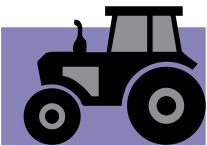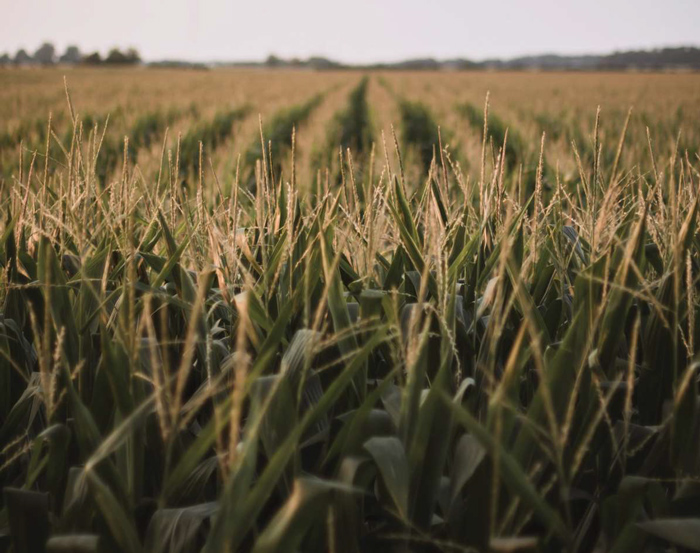October 2020
| Written by a retired farmer |  |
Crop rotation is another essential tool in managing your most important asset in crop production which is your soil. As a farmer a key objective is creating a sustainable and profitable crop production system that will ensure the long-term survival of a small family farm or a large commercial grain producing enterprise.
Crop rotation will go hand in hand with building your soil fertility and the yields of all crops and pastures within the chosen sequence of crops that would be most ideal for your farming enterprise. If legumes such as soybeans or nitrogen fixing pastures such as lucern are included in the rotation the costs of nitrogen fertilisation for the next grain can be reduced. One of the objectives being to reduce input costs and the financial risk within a farming business over the long term.
If you have been mono-cropping (planting the same crop year after year) for many years on a farm or certain lands on the farm, you can start with one or two alternative crop choices in the next production season. It takes several years of producing alternative crops to gain the knowledge to produce them efficiently. The change can go together with introducing a minimum till system as well as crop rotation on farms that have only been mono-cropping. Plan your introduction of either or both carefully to be able to use your existing equipment if possible.
BENEFITS OF CROP ROTATION SYSTEMS
Minimum till systems are based on minimum soil disturbance, crop residue retention on the soils’ surface help to improve water absorption by the soil, soil structure or tilth, moisture retention, increase organic matter, reduce soil erosion and increase crop productivity. Planting different crops within a minimum till system can be challenging at first.
Some of the advantages of a crop rotational system are as follows. Alternating shallow rooted and deep-rooted crops ensures that different ratios of soil nutrients are removed from different soil levels. The deep-rooted crops use deeper situated soil nutrients which are then made available for the shallow rooted crops when the plant residues are eventually recycled into the next crop. Soilborne pest and fungi infections cannot gain a hold as can be experienced with monocropped grains. Weed control in maize for example for broadleaf weed control can be alternated with control of weed grasses in sunflowers or soybeans.
This reduces the build-up of resistance to chemical control of weeds in continuous production of maize. These weeds will eventually not be able to be killed by any chemical as they are survivors of previous control regimes over many plant generations. The only way to control weed resistance in this situation is by planting a different crop and to change the chemical control regime accordingly.
Grain yields improve with each crop if the fertilisation is optimally applied and fertility of the soil is also improving. The planning of the right amount of fertilisation for each crop is still critical in maintaining or improving yields within the rotational cycle.
PLANNING THE CROP ROTATION
In making considerations for your planning you can ask whether your crop choices contribute to soil organic matter, provide for pest management, manages the nutrient build-up such as nitrogen for the next crop or the removal of certain nutrients, contributes to soil erosion control, reduces the cycle of build-up of certain weeds or pathogens that can affect the next crop, and the possible effect of chemical control on the next crop or crops in nearby lands.

When starting and planning the rotation use crops with proven yield results in your area.
If you can include soybeans or other legume crops which have been proven to be successful in your area it can be an advantage. Soybean plants collect available nitrogen from the air by harnessing a mutually beneficial relationship with rhizobium bacterial nodules that form on their roots. They supply the current crop with nitrogen and as these nodules break down, they supply nitrogen to the soil for use by the next crop. As an example, in a simple three crop system plant soybeans after an optimally fertilised maize crop followed by sunflowers. The organic nitrogen in the soil will improve the nitrogen required by the sunflower crop which responds well to a build-up of nutrients in the soil as well as the fertiliser applied at planting.
In some areas a maize and soybean or drybean rotation has been successfully implemented. After proving a simple crop rotation pattern, pasture legumes, wheat and barley, medics, teff or a minimum of three years eragrostis pastures for your livestock factor can be introduced. This diversity lowers the risk. If you only plant one crop type and that enterprise fails, it can destroy your farming business.
The crops and pastures used will depend on the prevailing farm climate and circumstances in your farming area.
CONCLUSION
Consider the many advantages of introducing a crop rotation system. If you currently only plant one kind of crop, it is important to start diversifying to lower production and financial risk and to promote sustainable farming into your future.
Publication: October 2020
Section: Pula/Imvula